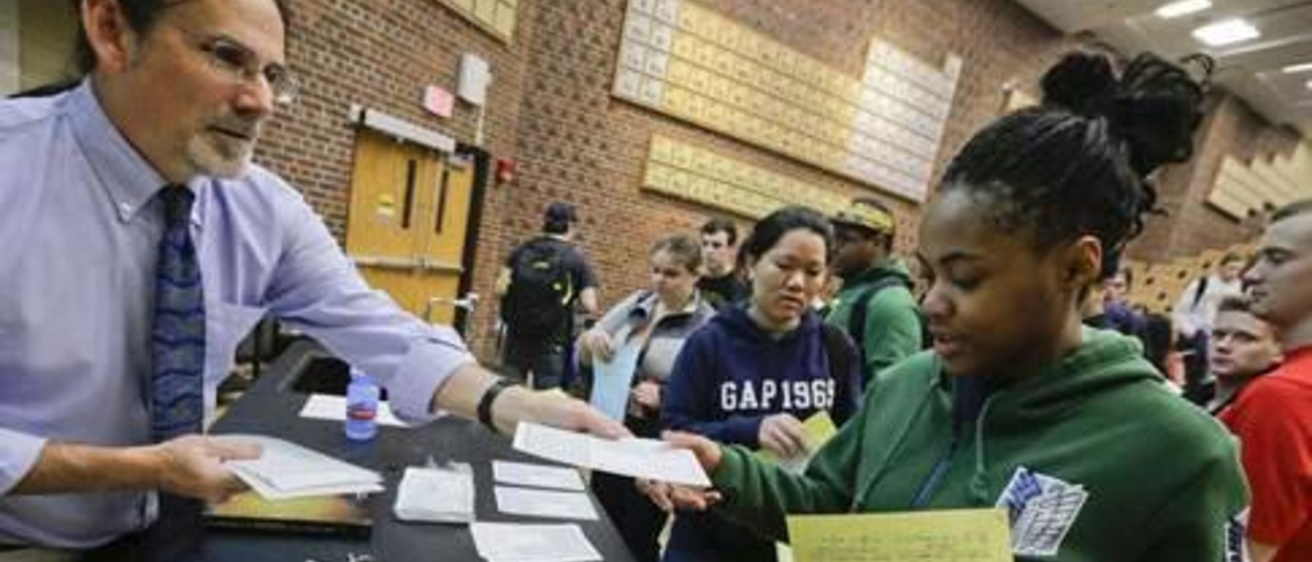Longtime University of Iowa physics and astronomy professor Craig Kletzing made big news in 2019 when he won the single largest research grant in UI history — a $115 million award from NASA to study how the sun and Earth’s magnetic fields interact.
But the space plasma physicist over several decades before that had established himself not only as an expert in the field of space physics — researching, among many things, the Northern Lights and Van Allen radiation belts — but as a passionate educator, eager to inspire in his students the “a ha” moments that drove investigations and discoveries.
“This all started here at the University of Iowa,” Kletzing said proudly about “the beginning of space science in the world” during his portion of the 39th UI Presidential Lecture last year.
Longtime University of Iowa physics and astronomy professor Craig Kletzing made big news in 2019 when he won the single largest research grant in UI history — a $115 million award from NASA to study how the sun and Earth’s magnetic fields interact.
But the space plasma physicist over several decades before that had established himself not only as an expert in the field of space physics — researching, among many things, the Northern Lights and Van Allen radiation belts — but as a passionate educator, eager to inspire in his students the “a ha” moments that drove investigations and discoveries.
“This all started here at the University of Iowa,” Kletzing said proudly about “the beginning of space science in the world” during his portion of the 39th UI Presidential Lecture last year.
Speaking just a month after Gurnett died in January 2022, Kletzing wrapped up his portion of the presidential lecture with a nod to the young faculty poised to keep the campus’ space mission moving.
“It’s really spectacular to have these young faculty,” he said, with his characteristic spirit of humility. “It makes one feel quite warm that we’ve got a good strong future.”
But work to pick up and push forward his pursuits will start sooner than anyone expected or wanted. The preeminent UI professor died Aug. 10 at 65.
“He's leaving the legacy of a multihyphenate professor: the educator, the mentor, the friend, the supportive faculty member, the scientist, the researcher, and the experimentalist,” UI Associate Professor Allison Jaynes said. “He was equal parts all of those things, and that's hard to find.”
During his decades at UI — having earned undergraduate, master’s and doctoral degrees in the University of California system, where he studied under Carl McIlwain, who studied under UI’s Van Allen — Kletzing authored or co-authored more than 290 publications and taught 75 physics classes.
His class list spanned beginning-level courses for nonscience majors to graduate-level courses for astrophysicists-to-be. And his teaching techniques ranged from traditional to novel — employing attention-grabbing demonstrations, like the time he strapped ear-protection on former UI President Bruce Harreld and sent him careening across a lecture hall on a rocket-powered tricycle.
“He’s just one outstanding individual,” UI physics and astronomy professor Greg Howes said in his introduction of Kletzing last year for the presidential lecture. “He plays in a rock band. He teaches students with a passion that you don’t often see in a world-class researcher.”
Kletzing catapulted the university to record-breaking external funding levels in 2019, when he landed the $115 million NASA grant for a project called TRACERS — standing for Tandem Reconnection and Cusp Electrodynamics Reconnaissance Satellites.
The project — involving a pair of satellites built to study how the solar wind, a stream of ionized particles escaping the sun and pouring out into space, interacts with Earth’s magnetic field — has a targeted launch date of July 27, 2024.
In April 2022, NASA celebrated a “critical milestone” for TRACERS in its passing a mission review that evaluated its design and program plan. As principal investigator of the mission, Kletzing led a team of scientists, engineers and support staff and collaborated with various institutions — including NASA’s Heliophysics Explorers Program Office at its Goddard Space Flight Center in Greenbelt, Md., providing mission oversight for the project.
Iowa’s associate professor of physics and astronomy David Miles will step in as interim principal investigator on the mission.
Nicola Fox, associate administrator for the Science Mission Directorate at NASA, told the UI Office of Strategic Communication that Kletzing had a genuine love and excitement for science.
“He was a world expert in fields and waves measurements, leading an instrument suite that flew on the Van Allen Probes mission, producing groundbreaking science results of the wave processes responsible for particle acceleration in the Earth’s radiation belts,” said Fox, who worked with Kletzing on science missions since 1996 and visited him on the UI campus last year.
“If you walk around Van Allen Hall, you will find students of all levels taking part in his missions — each doing an outstanding job because they have been mentored by Craig,” Fox said. “I was once a more junior scientist, and Craig supported the first steps of my journey. There are so many successful people throughout the science community who would say exactly the same.”
Answering the question of Kletzing’s greatest contribution to UI, Howes said the easy answer is a $115 million contract.
“But far more important and lasting than that is his impact on the students and the researchers — they will be the scientists and the leaders of the next generation,” he said. “Those are the people that will look back and think about their days as an undergraduate or graduate student at the University of Iowa, who were inspired and trained by Craig to be the best scientists and educators they could be.
“That's really his biggest contribution to the University of Iowa,” Howes said. "To the United States as a whole.”
By Vanessa Miller, who covers higher education for The Gazette.
Note: The Gazette offers limited online access to articles without a subscription.
